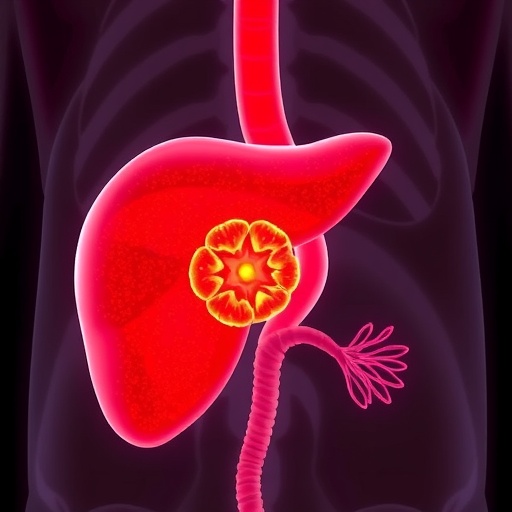Recent research has highlighted a significant public health concern in India: the high prevalence of hepatic steatosis and fibrosis among individuals diagnosed with type 2 diabetes. This condition, which is more commonly known as nonalcoholic fatty liver disease (NAFLD), has emerged as an alarming epidemic, affecting millions of people, particularly in the Asian Indian population. The study conducted by Bhuvanesswar et al. provides insights into the prevalence, potential risk factors, and implications of this condition, shedding light on the pressing need for awareness and intervention.
As the incidence of type 2 diabetes continues to rise globally, the association between diabetes and liver health has become increasingly evident. Individuals with diabetes often present with metabolic Syndrome, which can lead to an increased risk of hepatic steatosis. The evidence indicates that fatty liver is not simply an incidental finding, but rather a comorbidity that requires careful management to prevent long-term liver damage, including fibrosis and cirrhosis.
The study focuses on a cohort of Asian Indian individuals diagnosed with type 2 diabetes, revealing that the prevalence of hepatic steatosis in this population is alarmingly high. The authors utilized advanced imaging techniques, including ultrasound and elastography, to assess liver health, providing a comprehensive evaluation of hepatic fat accumulation and fibrosis stages. Their findings underscore the critical need for routine screening of liver health in diabetic patients to facilitate early detection and management of any liver-related complications.
Moreover, this study emphasizes the multifactorial nature of hepatic steatosis and its interrelation with various metabolic factors. The researchers found strong correlations between body mass index (BMI), waist circumference, and liver fat content, revealing that excess adiposity plays a significant role in the development of fatty liver disease. This points to the necessity for lifestyle modifications—particularly weight management—as a primary intervention strategy to combat both diabetes and liver disease.
The pathophysiology of hepatic steatosis, as highlighted in this research, involves complex metabolic derangements that occur in the liver. Insulin resistance, a hallmark of type 2 diabetes, exacerbates the influx of free fatty acids into hepatic cells, leading to excessive fat accumulation. The study’s findings indicate that therapeutic approaches targeting insulin sensitivity may not only improve glycemic control but also offer protection against liver damage.
In addition to metabolic factors, the study explores the genetic predispositions that may influence the severity of hepatic steatosis in Asian Indians. The authors discuss the role of specific gene polymorphisms that may affect lipid metabolism, making certain individuals more susceptible to the development of NAFLD. Genetic screening could present a useful tool in personalized medicine, allowing for tailored preventive strategies for high-risk populations.
Stress factors, both physiological and psychological, have also been implicated in the progression of liver disease. The study cites evidence that chronic stress may exacerbate insulin resistance and subsequently worsen liver health. Mental health interventions, therefore, could serve as an essential adjunct to medical treatment, addressing the holistic needs of individuals living with diabetes.
The public health implications of this research are profound. The high prevalence of hepatic steatosis among diabetic patients in India represents an urgent call to action for healthcare professionals and policymakers alike. Education and advocacy programs focused on liver health, dietary modifications, and physical activity are paramount to reducing the burden of liver disease.
On a community level, the integration of liver health awareness into diabetes management protocols can foster a more comprehensive approach to combatting both conditions. Community health initiatives could promote regular screening for liver disease in diabetic patients, facilitating early diagnosis and intervention. These efforts could significantly impact overall health outcomes in this vulnerable population.
The findings of this study also prompt a critical evaluation of clinical practice guidelines for the management of type 2 diabetes. The traditional focus on glycemic control may require an expansion to include liver health as a vital component of diabetes care. Clinicians are encouraged to adopt a multidisciplinary approach, engaging dietitians, endocrinologists, and hepatologists in the comprehensive management of their patients.
In summary, the research by Bhuvanesswar et al. illuminates the significant yet often overlooked intersection of diabetes and liver health. The compelling evidence presented underscores the need for proactive measures to screen, prevent, and manage hepatic steatosis and fibrosis in individuals with type 2 diabetes. As the prevalence of these conditions continues to rise, addressing this public health challenge is of utmost importance to improve the quality of life for those affected.
As healthcare systems grapple with the dual burden of diabetes and liver disease, numerous questions remain regarding the best strategies to mitigate risks and enhance patient outcomes. Future research should aim to further delineate the mechanisms linking diabetes with hepatic disease, exploring both therapeutic avenues and innovative screening methodologies. The answers to these questions may hold the key to not only managing these intertwined health issues but also preventing their onset.
By fostering a greater understanding of the interplay between hepatic steatosis and diabetes, researchers and clinicians can work towards improved health strategies tailored to the needs of affected populations. The significance of this study lies not only in its findings but in its call for a concerted effort to address an urgent healthcare concern that affects millions of individuals worldwide.
Subject of Research: Prevalence of Hepatic Steatosis and Fibrosis in Type 2 Diabetes
Article Title: Prevalence of Hepatic Steatosis and Fibrosis in Asian Indian Individuals with Type 2 Diabetes
Article References:
Bhuvanesswar, K.C., Srivastava, B.K., Amutha, A. et al. Prevalence of Hepatic Steatosis and Fibrosis in Asian Indian Individuals with Type 2 Diabetes.
Diabetes Ther (2025). https://doi.org/10.1007/s13300-025-01764-1
Image Credits: AI Generated
DOI: 10.1007/s13300-025-01764-1
Keywords: Hepatic Steatosis, Fibrosis, Type 2 Diabetes, Asian Indian Population, Nonalcoholic Fatty Liver Disease, Metabolic Syndrome




